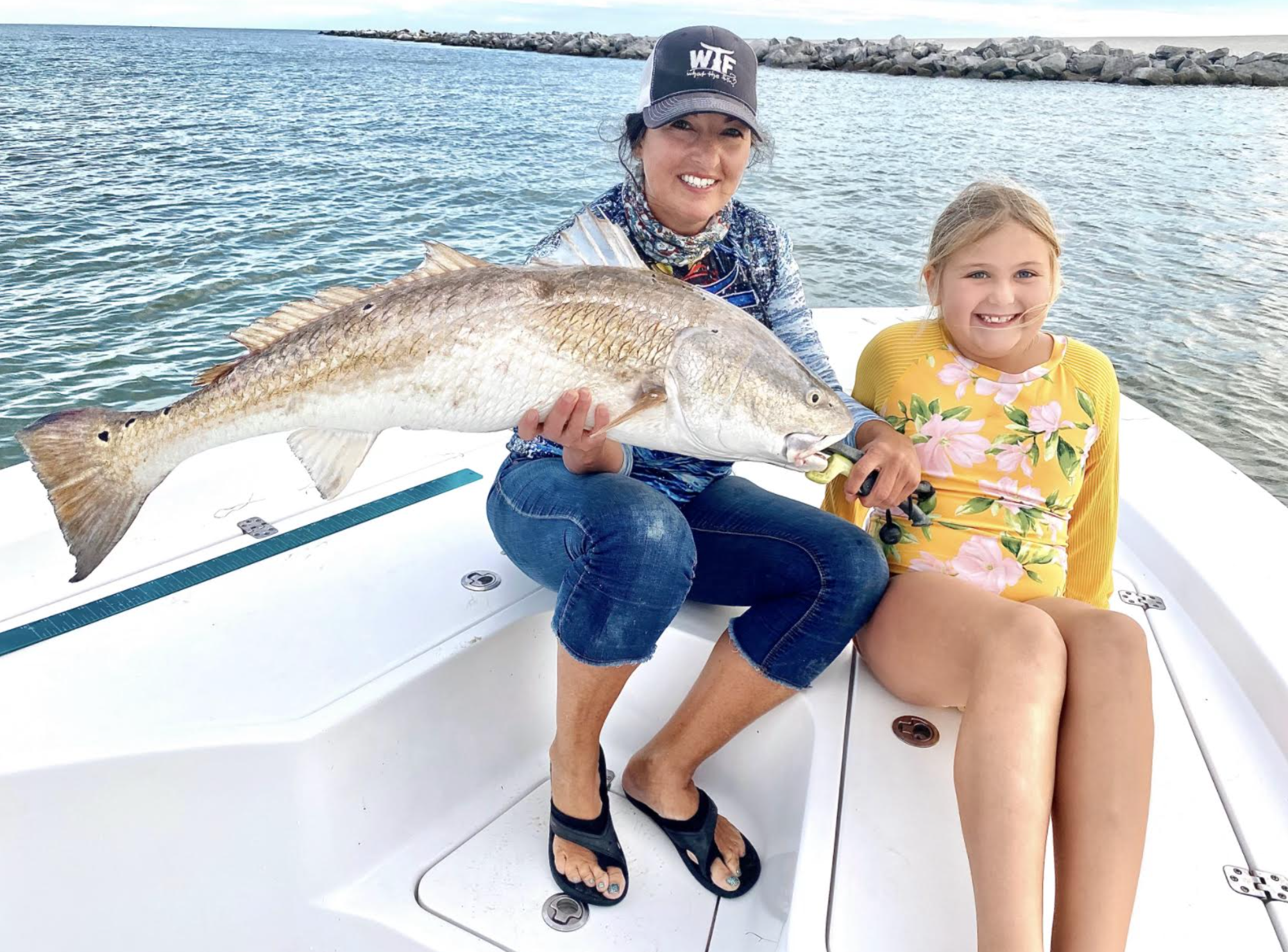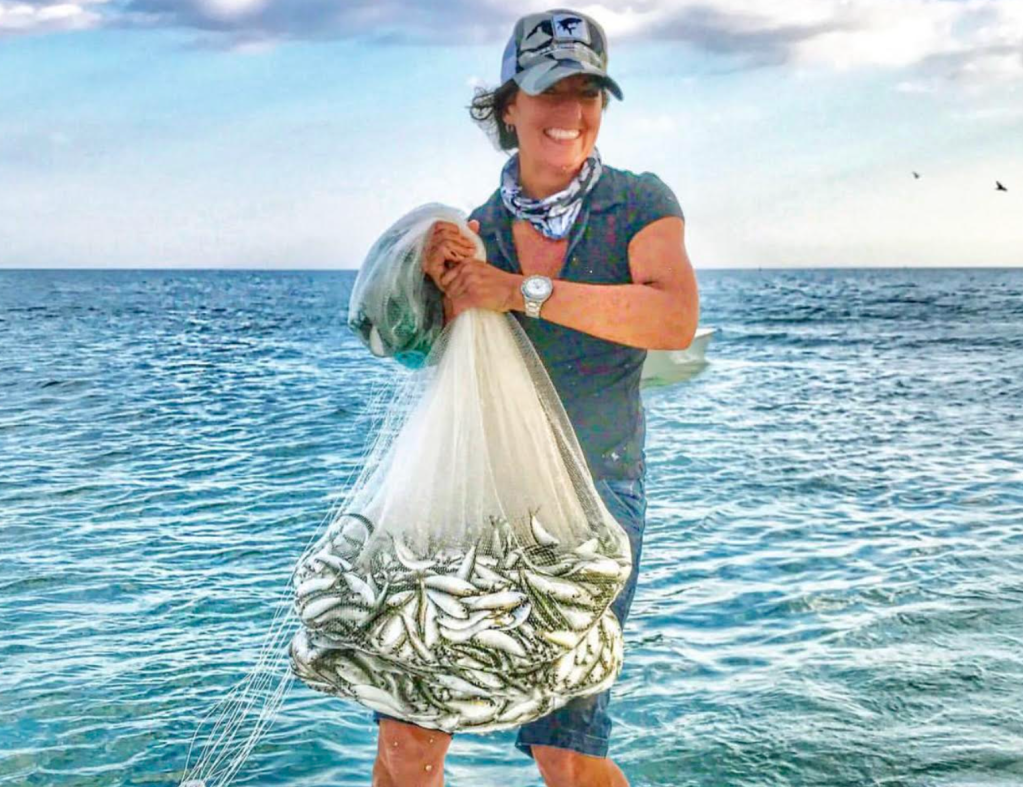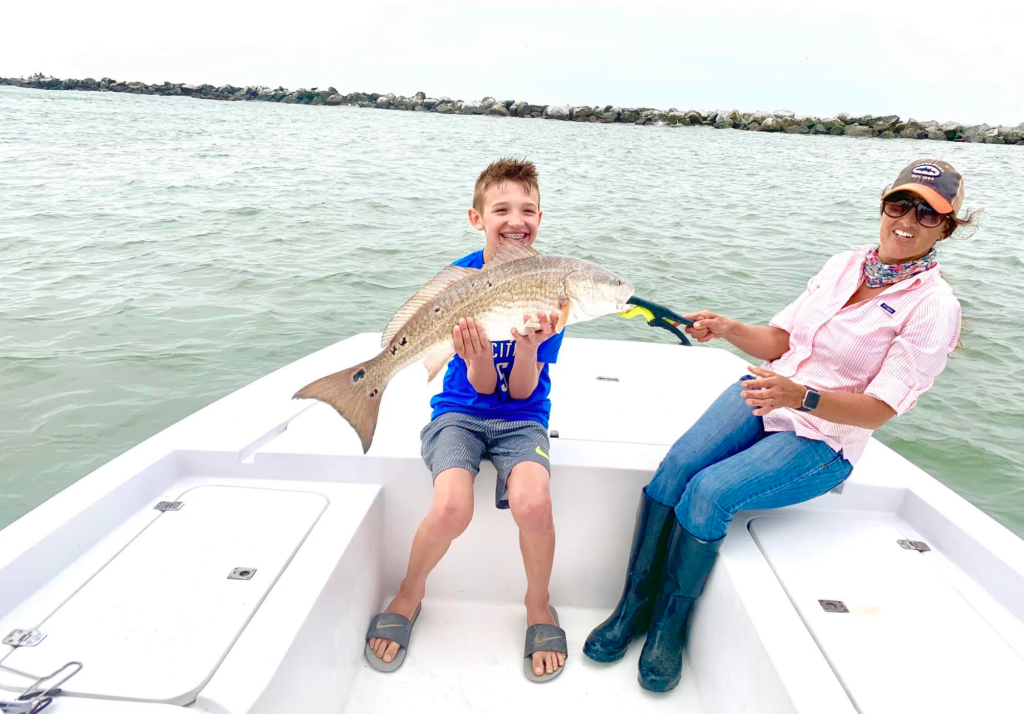
If a saltwater fishing guide says they like to go with the flow, they’re not necessarily implying conformity, laziness or lack of direction. Rather, they’re probably referring to a well-calculated strategy for leveraging nature’s water dynamic to achieve maximum angling opportunity.
That could apply to multiple scenarios where tidal movement concentrates fish in discernible feeding zones, but coastal passes will always be one of the most consistent. In short, these nearshore funnels offer great fishing opportunities for those who understand the dynamics and the requisite tactics.
As a full-time fishing guide specializing in the Florida Panhandle’s St. George Island, Capt. Krista Miller does the majority of her work in passes. In her experience, it’s all about leveraging natural processes to put her anglers where the feeding happens.
“The tides that move in and out of those areas are what make passes so productive,” Miller said. “That’s generally where you’re going to find your greatest water flow. That’s the highway for fish movement.”
Drift fishing her targeted pass, Miller primarily targets redfish, both the slot sized fish between 18 and 27 inches and the giant “bull” reds that can reach 25-30 pounds. Sheepshead and black drum also love the jetties and natural rock common to passes, while flounder, whiting, pompano, seabass, and juvenile grouper broaden the mix.
“That’s where the (forage) is going to be, so that’s were the fish are going to be,” Miller said.
Dependable opportunity
This scenario replicates throughout the Gulf of Mexico, from Texas to Florida. Some passes are little more than glorified cuts, while others form significant coastal inlets.
“The size of the pass tells you how much water is going to be moving in and out,” Miller said. “The bigger the pass, the larger the area, the deeper, and the easier it is for them to navigate around predators that may be waiting for them.”
With St. George Island’s east-west orientation, Miller fishes a trio of passes: West Pass between St. Vincent Island and Little St. George’s west end, Sikes Cut, the manmade shipping channel separating St. George and Little St. George Island, and East Cut, which runs between the east end of St. George and Dog Island.
“Fish have to come in one of those passes to get into Apalachicola Bay,” Miller said. “We have all types of crustaceans around the jetties; pilchards, threadfin herring (aka “greenbacks”), and a lot of shrimp.”
Daily ebb and flow keeps this party rocking, but Gulf anglers know the fall season finds some of the most intense pass action as schools of baitfish that have spent the warmer months inside coastal bays and the Intracoastal Waterway flush outward to find warmer areas to over winter.
Outgoing tides create a briny buffet that has every predator imaginable stacked outside the pass. Once the food flow starts, raining bait schools, white water ravaging, and violent surface blow ups create amazing displays of aggression.

Pass protocol
For simplicity and consistency, Miller relies of what she calls her “pass rig” — a setup designed to present natural baits close to the bottom. Slipping a 1- to 1 1/2-ounce egg weight onto her main line, Miller ties to one side of a barrel swivel, adds 12-14 inches of 20-pound fluorocarbon leader to the other side and finishes with a 2/0 hook.
“I like to go as light as I can but you want your weight to be on the bottom for the bull reds,” Miller said. “I’m usually fishing in 18-23 feet, depending on the tide stage. If I need a 2-ounce weight (to manage the current), I probably won’t be doing this.”
Miller finds greenbacks are her most consistent redfish bait, but if they’re not available, she’ll use fresh dead shrimp. As Miller explained, when frozen shrimp thaws, it turns soft and mushy — pretty much impossible to consistently hold onto a hook.
Miller also points out that Individually Quick Frozen (IQF) shrimp should be avoided because the process leaves the bait with a chemical smell that reds typically avoid. Likewise, applying sunscreen lotions, then handling baits without thoroughly washing your hands renders your efforts pointless.
“If your shrimp smells like Hawaiian Tropic, you’re not going to catch anything,” Miller said.
Miller also catches pass fish by drifting with half a blue crab or cut bait — usually greenbacks or mullet. With the latter two, she’s careful to wipe the bait chunks prior to deployment.
“I make sure no blood gets into the water from the bait or the boat’s drain hole,” Miller said. “As soon as one drop of blood hits the water, every shark in then area will be right under you.”
Artificial Option: While a pass’ rocky composition makes it tough to fish most artificial lures during peak tidal flow, Miller fares well with a scented shrimp imitator called the Salt Strong Power Prawn. Rigging this synthetic bait on a 1/8- to 1/4-ounce jig head, Miller adds Berkley GULP scented spray to help fish locate the bait in murky water.
“I’ll drift the pass and let that bait float behind us,” Miller said. “It’s kind of like trolling.”
Operational Efficiency: Typically fishing four to six anglers on her Skeeter bay boat, Miller keeps the boat drifting sideways to keep all those lines separated. Drifting bow-to-stern creates overlaps that usually end up tangling lines.
Even with this efficient alignment, success requires coordination and cooperation.
“Everyone has to drop at the same time,” Miller said. “It’s like synchronized swimming. We all drop, I count to 10 Mississippi, and we all close our bails.
“If one person gets a bite, they stand there still while we all reel up our lines and then we focus on that one person with the fish on their line. Those big bull reds will take off running and cross all those lines and break off, so that’s why we clear everyone’s line when someone hooks up.”

Know the flow
So when is coastal pass fishing most productive? Miller prefers a high tide, either incoming or outgoing. Maximum water in the pass means maximum fish potential.
“I’ll schedule my trips during the best tidal periods,” Miller said. “If the high tide is at noon, and I have a 4-hour trip, I’ll fish from 10 a.m. until 2 p.m.”
Slack tides effectively pause the action, at least for the drifting technique. Vertically dropping to key areas and working spoons, swimbaits or twitchbaits might turn up a few bites, but that’s like manually spinning a ceiling fan when someone turns it off.
“That’s when I tell my anglers to enjoy their lunch and have a little picnic,” Miller chuckled. “You can (chase the tide) by going farther upstream or downstream to stay with the moving water, but I usually just wait it out.”
Unlike the extreme tides of the Georgia Bight, the pronounced coastal indention that extends from Cape Hatteras, N.C. to Cape Canaveral, Fla., Gulf tides are significantly less dramatic. That means Miller rarely has to wait very long for slack water to start moving in or out.
“We can be drifting one direction and the tide will stop; then all of a sudden it will change and we’ll be drifting the other direction,” Miller said.
Then, the fun starts again.





